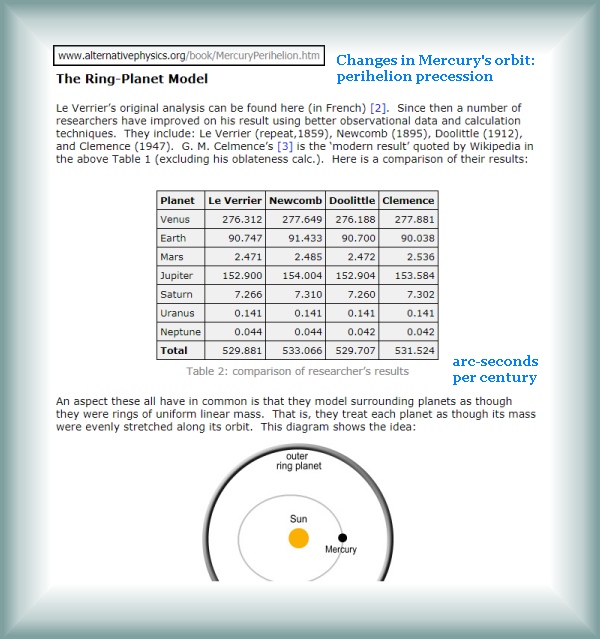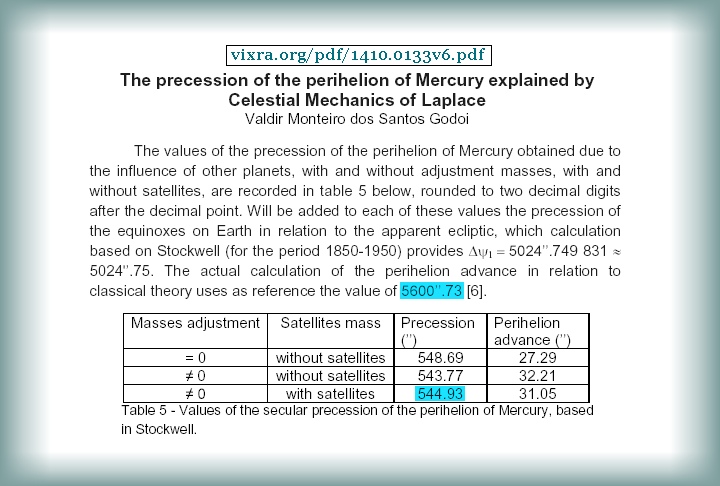So
how accurate is the ring-planet model? (diagram above)
There is a fundamental difference in process as to how the
algorithm OGS15
(orbit-gravity-sim-15.exe) works when compared to this. The
numerical models add up the various effects of each planet
using quite complex mathematical approximations,
whereas OGS15 just
uses just the formula of g=Gm/r^2
from Newton as well as the notion of quantum-time from Planck.
So OGS15 is a 3D evolutionary
model whereby each planet is constantly altering every other
planet. It is conceptually simpler, and yet effectively more
accurate because it takes into account more interactions.
Of course the computer does all the arithmetic for us: Countless
billions of simple calculations, with each iota of time accounted
for; and this is something impossible for humans to deal with
directly using pencil-paper math.
OGS15 does have a flaw in that the time-quanta
it uses cannot possibly be close to Planck-time because we
do not have computers that can process anywhere near that
rate of 5.4 x 10^-44 seconds
per calculation. In the same context, every moon is not calculated
directly. The masses of the moons have simply been added to
the mass of the parent body. Adding the data of each little
moon separately would not be a problem for the algorithm,
but it would slow the process down and thus be less accurate.
So the flaw is not in the algorithm, but in the accuracy which
can be attained by the processing power of the computer it
is running on. But these error-margins are mostly insignificant,
as will be shown later.
The computer used to construct OGS15
is
an ordinary 2014 entry level IBM machine
(later inadvertently down-graded to a 2017
Windows 10 contraption - with 4
lazy cores). But the algorithm itself can operate more accurately
when run on faster machines. So
you, the user, might likely get better results from my software
than I can, without doing anything much more than clicking
the start button, then observing the results after the algorithm
has evolved.
Thus the methods used historically to calculate Perihelion
Precession between orbits are astonishingly crude by computational
standards. Even then, they are actually more complex than
OGS15 from a mathematical perspective. But
all of the numerical models I have seen are merely in 2D,
whereas OGS15 is 3-dimensional.
However, I also use algorithm OGS13 which
is in 2D, for vital comparative purposes.
The famous Horizon Ephemeris
uses excellent 3D observational data, but
it predicts each planet's future movements individually using
what I can only figure as being statistical and/or numerical
methods. Horizon Ephemeris is thus not a genuine n-body-gravity
evolutionary model. (I'll prove this claim later.)
Here is another account of Mercury's Perihelion Precession:



